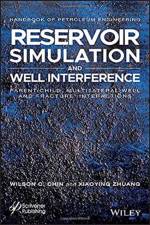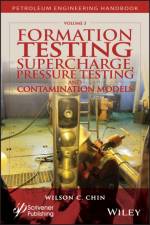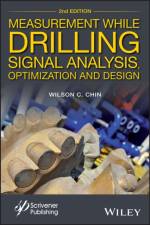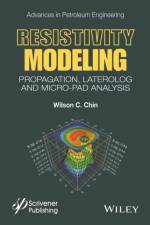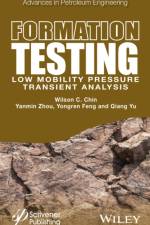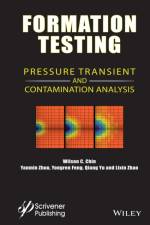- Signal Analysis, Optimization and Design
av Wilson C. Chin
2 967
The only book explaining modern measurement while drilling (MWD) technology, including hardware design, signal processing and telemetry and offering unique approaches to high-data-rate well logging, novel methods, experiments, and prototype tools. Trade magazines and review articles describe MWD in casual terms, e.g., positive versus negative pulsers, continuous wave systems, drilling channel noise and attenuation, in very simple terms absent of technical rigor. However, few truly scientific discussions are available on existing methods, let alone the advances necessary for high-data-rate telemetry. Without a strong foundation building on solid acoustic principles, rigorous mathematics, and of course, fast, inexpensive and efficient testing of mechanical designs, low data rates will impose unacceptable quality issues to real-time formation evaluation for years to come. This all-new revised second edition of an instant classic promises to change all of this. The lead author and M.I.T.-educated scientist, Wilson Chin, has written the only book available that develops mud pulse telemetry from first principles, adapting sound acoustic principles to rigorous signal processing and efficient wind tunnel testing. In fact, the methods and telemetry principles developed in the book were recently adopted by one of the world's largest industrial corporations in its mission to redefine the face of MWD. The entire engineering history for continuous wave telemetry is covered: anecdotal stories and their fallacies, original hardware problems and their solutions, different noise mechanisms and their signal processing solutions, apparent paradoxes encountered in field tests and simple explanations to complicated questions, and so on, are discussed in complete "tell all" detail for students, research professors and professional engineers alike. These include signal processing algorithms, signal enhancement methods, and highly efficient "short" and "long wind tunnel" test methods, whose results can be dynamically re-scaled to real muds flowing at any speed. A must read for all petroleum engineering professionals! This all-new revised edition: Is the first and only publication that explains MWD mud pulse technology clearly using scientific principles Includes ideas showing limitations of present systems and how they can be overcome Explains innovative methods for signal enhancements needed for very deep wells, such as constructive wave interference, "sirens in series," special adaptations of frequency-shift-keying, and others Gives a blueprint for high-data-rate mud pulse telemetry adopted by several of world's top energy corporations, explained in simple-to-understand terms, from first principles and rigorous physics to advanced mathematical concepts for signal processing, noise removal and echo cancellation And finally, offers, from Wilson Chin, the originator of wind tunnel modeling for downhole applications, new wind "short" and "long" tunnel designs and test methodologies for mud sirens and turbines are offered - all the technology you'll ever need between two covers!

